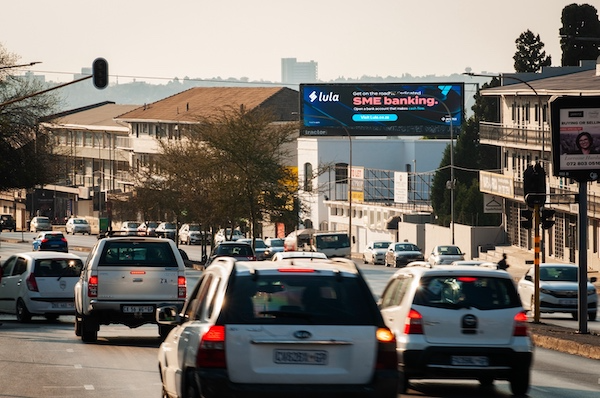Ruchelle Mouton, Group Head of Marketing and Services at Tractor Outdoor, discusses how to show value in a goldfish economy.
For ages, goldfish, known for their nine-second attention spans, have been used as a not-so-kind metaphor to describe someone who has a limited ability to focus on something at any given time.
But, according to a study from Microsoft Corp., this metaphor is no longer fair, to the goldfish, that is. Because, thanks to the advent of technology, the average human attention span has decreased from 12 seconds to a startling eight seconds, shorter than that of Little Goldie.
On-demand is a key driver of declining attention spans. Consider that Gen Z has never known a time before the internet and cellphone. If they want a ride, Uber is always ready to take them. If they want something to eat, Mr Delivery offers them a range of cuisines to choose from and will deliver to their doorsteps. And when they want to Netflix and Chill, they can tune into Netflix, Disney +, Showmax…the list goes on.
Moreover, consider that between 6000 to 10,000 advertising messages hit us daily, across multiple platforms, devices, and channels, and it’s near impossible to internalise all these messages.
This exponential growth of advertising, shortening attention spans, on-demand culture and digital fatigue means that media consumption habits are evolving. People are tuning in, zoning out, skipping, and switching over. This cocktail of factors has severe implications for the advertising industry, which derives its value from consumer attention. And it begs the attention, how effective are our advertisements, really? And are we measuring what matters to enable effective planning?
If no one pays attention to your ad, there is no way it can influence a sale. So now we’re asking, does an ad on TV garner more attention than that same ad online? Do people tune in longer to a radio ad than a YouTube ad? In other words, does an impression delivered on one channel, offer the same attention as an impression reported on another?
The Goldfish Economy
This changing paradigm has been dubbed the ‘attention economy’ (but I feel that the ‘Goldfish Economy’ is far catchier!), and attention metrics have risen to the fore.
Media currencies remain mainly concerned with impressions, reach and ‘opportunities to see’, which offered a myopic view of value delivered. Attention metrics offer an alternative for media planners and owners to adapt their strategies in line with the dynamic nature of digital media consumption, enabling brands to measure and optimise their efforts for meaningful engagement rather than mere exposure.
OOH As An Attention Medium
According to Kantar Media Reactions Survey 2022, while marketers are increasingly using online channels, local consumers are showing the highest ad receptivity towards OOH and Digital OOH (DOOH), a medium surpassed only by sponsored events. This is because OOH is viewed as a non-intrusive medium. Moreover, DOOH is evolving to capture audience attention through creative, dynamic, and data-driven strategies. The integration of technology, interactivity, and real-time content adjustments is reshaping how advertisers approach OOH campaigns and engage viewers effectively.
Within this context, the Outdoor Measurement Council (OMC) has introduced the Visibility Adjustment Calculation (VAC), which is essentially a move towards an attention metric. VAC assesses the likelihood of an advertisement being seen by an audience, a key aspect of attention. It provides a more accurate representation of the effective reach of an ad by factoring in visibility and ad exposure time, rather than just counting the number of times an ad was served or reporting on the footfall and traffic around a certain location.
So why are we, as Tractor Outdoor, excited about this move?
1. More Granular Data Inputs For Programmatic
VAC allows us to measure digital impressions at a far more granular level, calculating audience delivery on ad play level by hour of the day, for each day of the week, a programmatic essential. By applying digital impressions at VAC level across programmatic platforms, we’re now able to elevate our reporting on programmatic buys.
We have updated our impression multipliers across our digital roadside sites, offering clients a universe of 37 million ‘attention-based’ impressions across our Roadside Digital Network monthly. Our analysis has provided new and significant insight into audience delivery across certain times of the day. We have seen, for example, that during lunch hour there is another traffic peak, and that peak traffic in the afternoon extends well into the later hours of the evening. All impression-based buys and served ads are optimised according to viewability across different times of the day.
2. Share Of Voice/Share Of Time
DOOH audience planning and delivery has always been challenging to quantify due to differing ad rotations, number of advertisers in a loop and ad lengths. This is further complicated by differences in loop structures across media owners. In the past, media owners and advertisers would assume that a spot on a 1 in 10 loop delivers 10% of the screen audiences, as an example. However, this approach does not consider that screen and ad-play impressions vary based on spot length time and the dwell time. In other words, on a share of time model, a 15” will have more viewability than a 5” ad. This is especially important for loop-based planning and reporting.
The move to VAC allows us to measure audience delivery based on a share of time model. This means that we can now provide clients with audience metrics that accurately represent the total audience delivery of a campaign.
In a nutshell, attention is a clear indicator of campaign outcomes. Increasingly, clients and agencies on the buy-side are understanding that viewability is not enough. The move to VAC and application of these to our audience measurement, reporting and impression multipliers is a necessary next step.
Reporting on attention, rather than merely impressions, will secure the industry’s future success and sustainability within a digital ecosystem.
TRACTOR OUTDOOR
https://www.tractoroutdoor.com/










